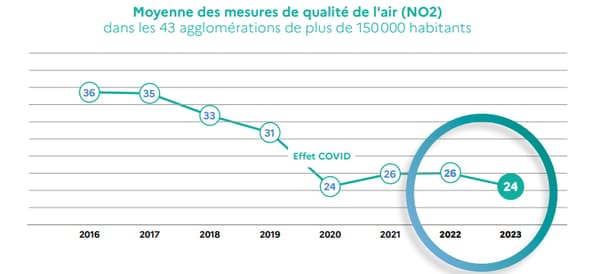New episode of the series on the establishment of Low Emission Zones (ZFE). While air quality improves in most of France’s large cities, a ministerial committee approved this Tuesday, March 19, a relative relaxation of this system, which plans to exclude older vehicles, considered the most polluting, from circulation.
“The good news is not that we are not going to ban it. It is that air quality is improving significantly,” reacted the Minister of Ecological Transition, Christophe Béchu, on TF1 this Wednesday morning.
• What changes?
This is the main announcement to remember: the “exit from the mandatory calendar for the evolution of the EPZs of Marseille, Rouen and Strasbourg that no longer regularly exceed air quality standards”, as indicated in the press release issued after this ministerial committee. .
In summary, for these three agglomerations Aix-Marseille, Ruan AND StrasbourgIt is no longer planned to prohibit the circulation of Crit’Air 3 vehicles from January 1, 2025. These are diesel vehicles over 14 years old (first registration before 2011) and gasoline vehicles over 19 years old (first registration before 2006).

This step is important because these Crit’Air 3 cars represent 21% of the French vehicle fleet.
• What program for Paris and Lyon?
Only two urban areas continue to exceed regulatory air quality thresholds: the metropolises of Greater Paris and Lyon.
Therefore, there are no changes for these two EPZs, which must prohibit the circulation of Crit’Air 3 on January 1, 2025.
Above all, it remains to be seen whether video verbalization will be implemented correctly by this date. Currently, checks are carried out during pollution peaks and Crit’Air stickers are occasionally banned. But not permanently, while those without a sticker, Crit’Air 5 and Crit’Air 4 are already banned “permanently”: weekdays from 8 a.m. to 8 p.m. in Paris, 7 days a week and 24 hours a day in Lyon.
• What about other major French cities?
Currently there are two different names for these low emission zones: “ZFE Territories”the metropolises of Paris and Lyon, which must respect the initially planned schedule.
But from 2025, all cities with more than 150,000 inhabitants must have created an EPZ. This remains the case, but with a more flexible schedule given the improvement observed in air quality.
We find these 40 agglomerations under the name “Surveillance territories” with two scenarios:
- 30 towns that have not yet established rules: they must prohibit the circulation of vehicles without a label, of passenger cars and utility vehicles registered before 1997 and of heavy vehicles before October 2001.
- 10 towns who have already implemented these rules and therefore no longer have any obligation to tighten the current restrictions.
Source: BFM TV

